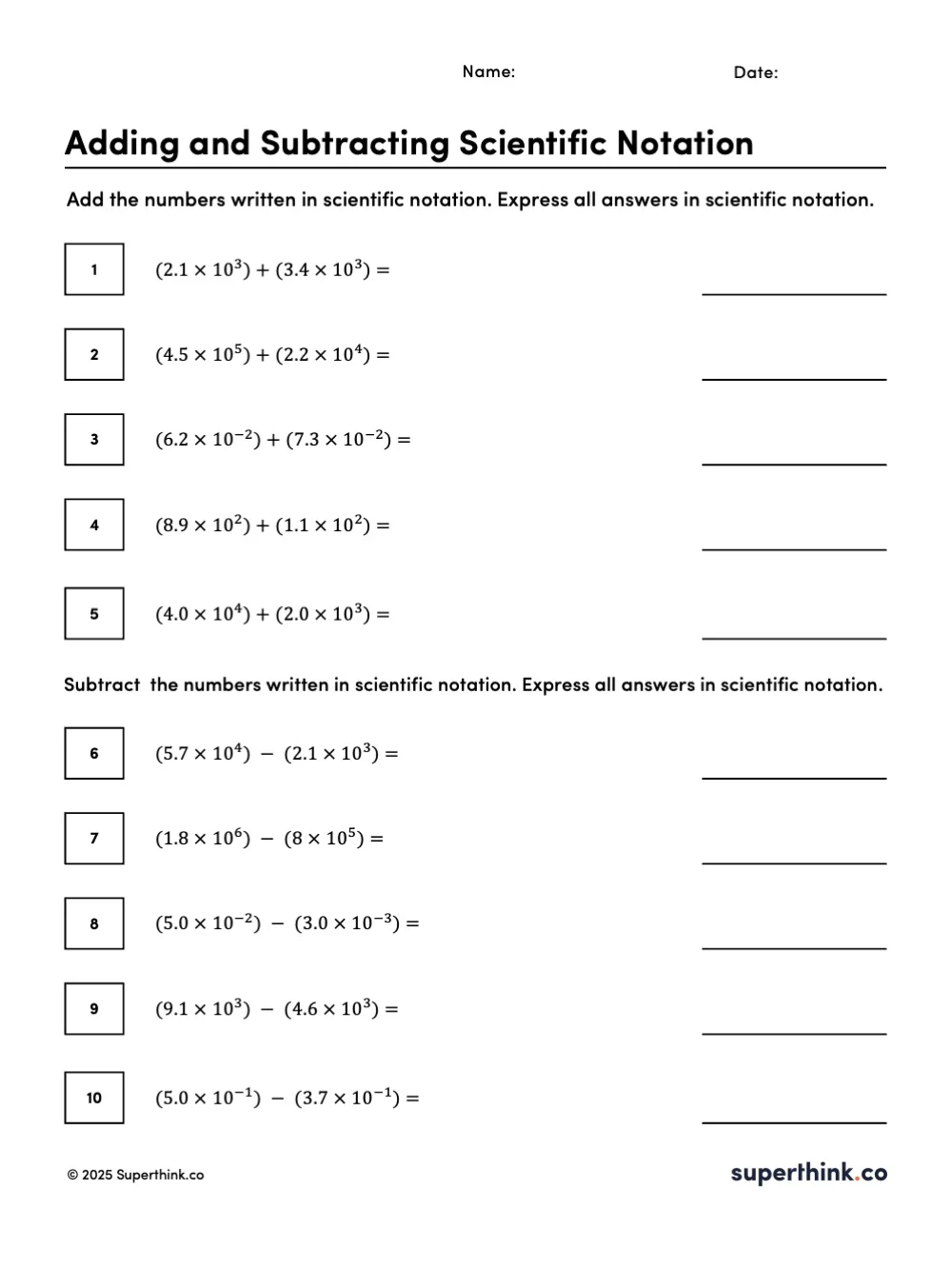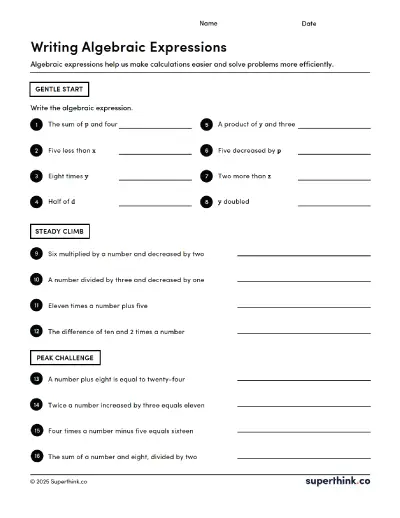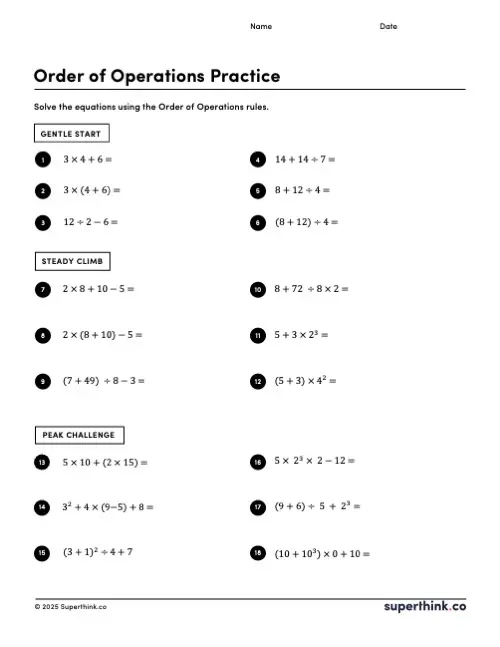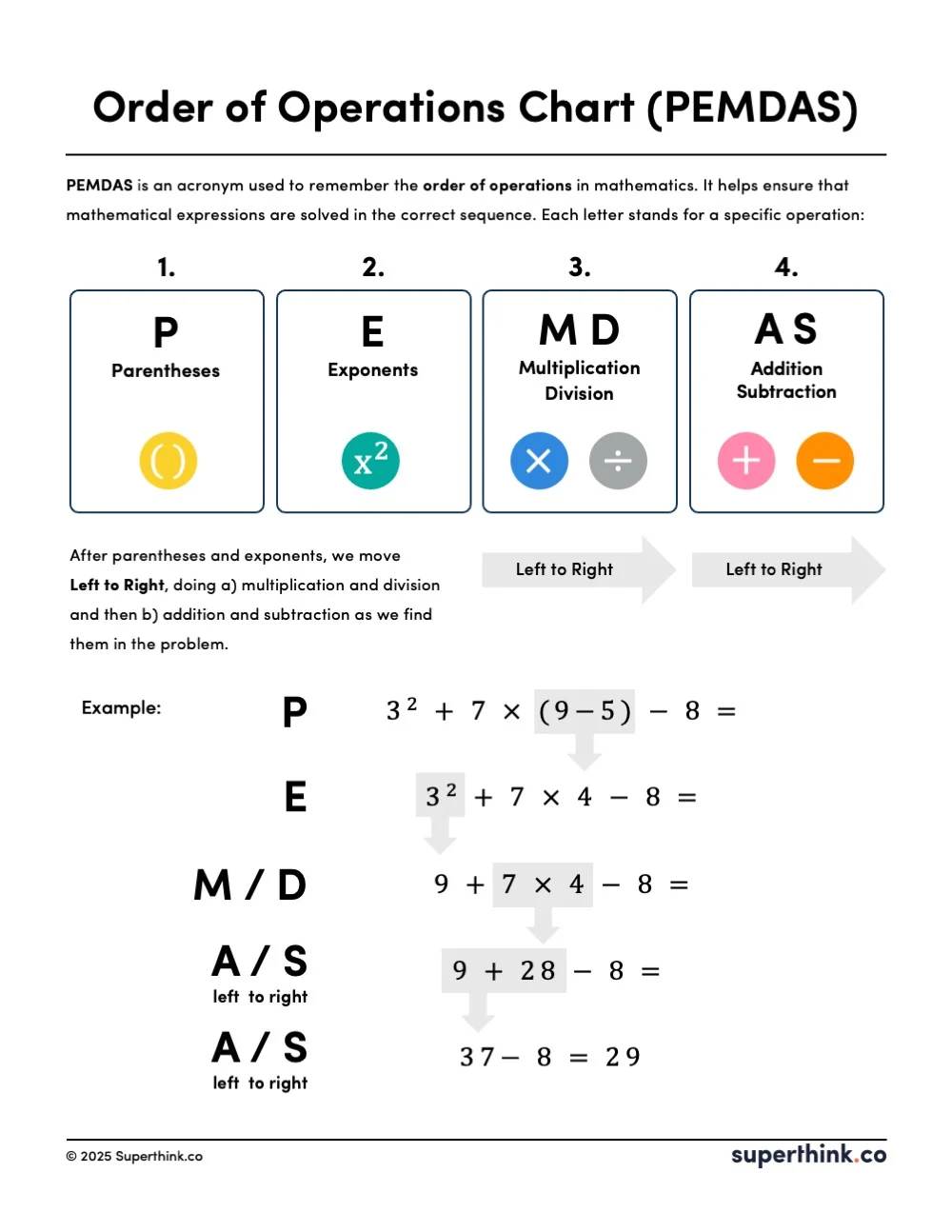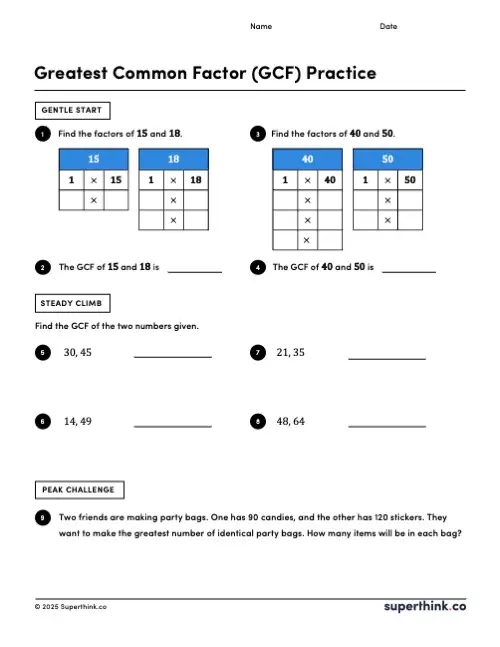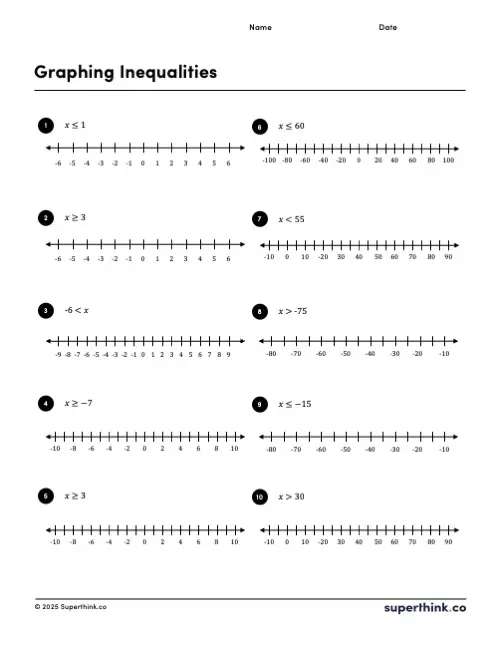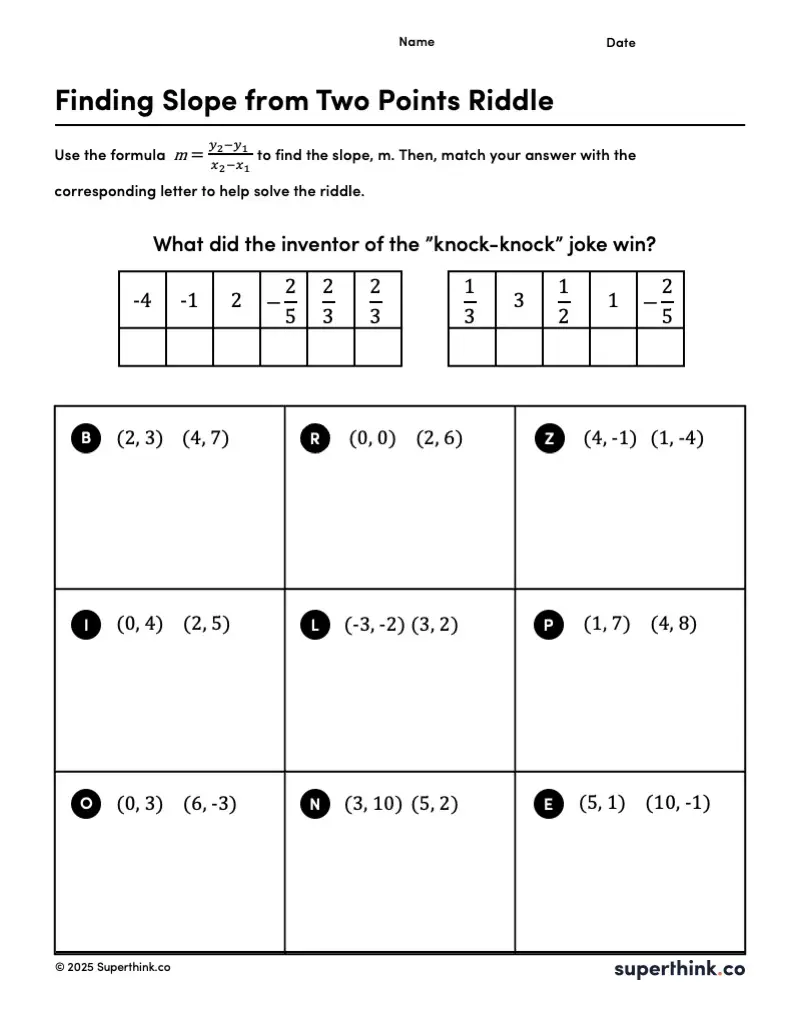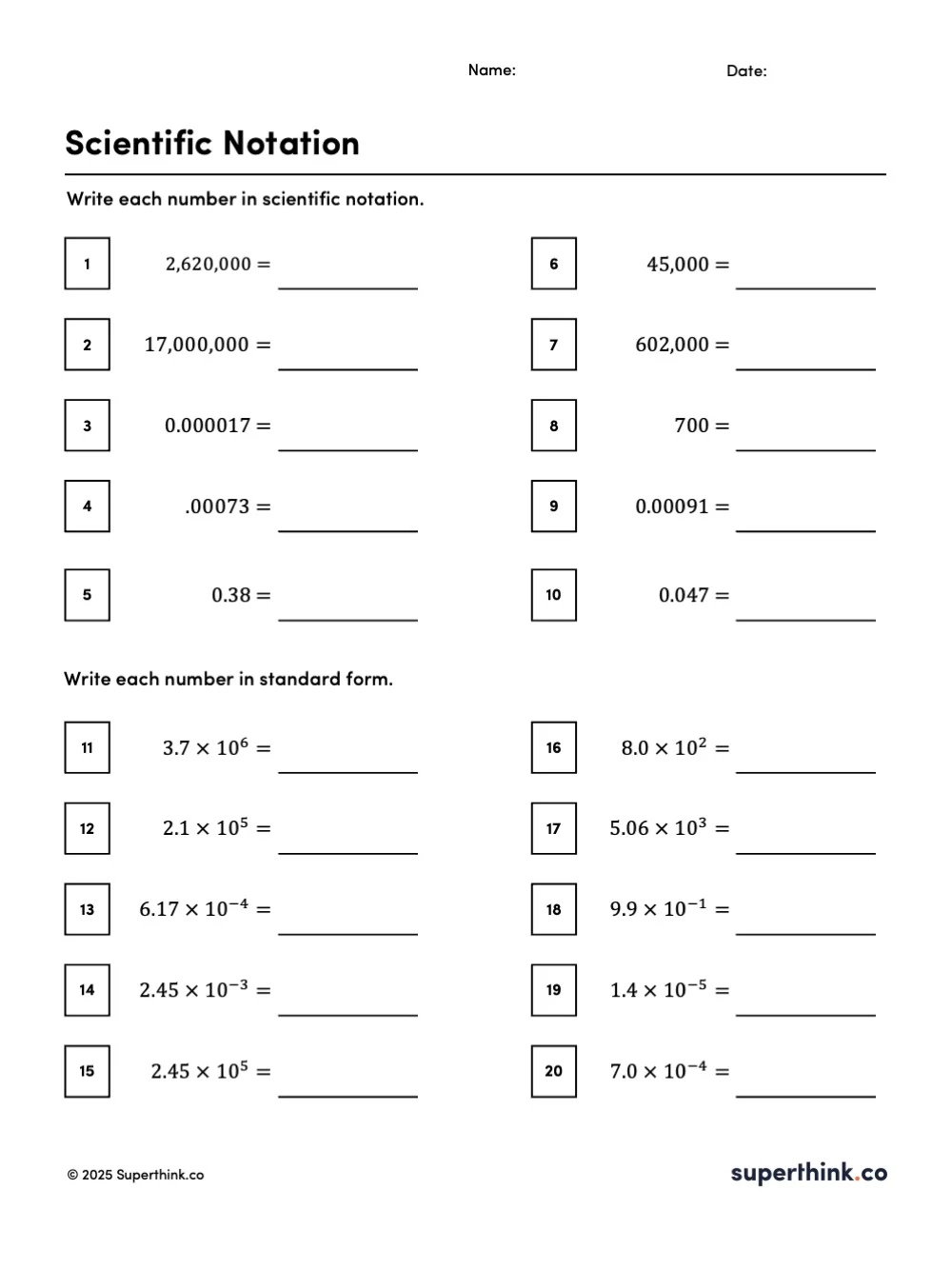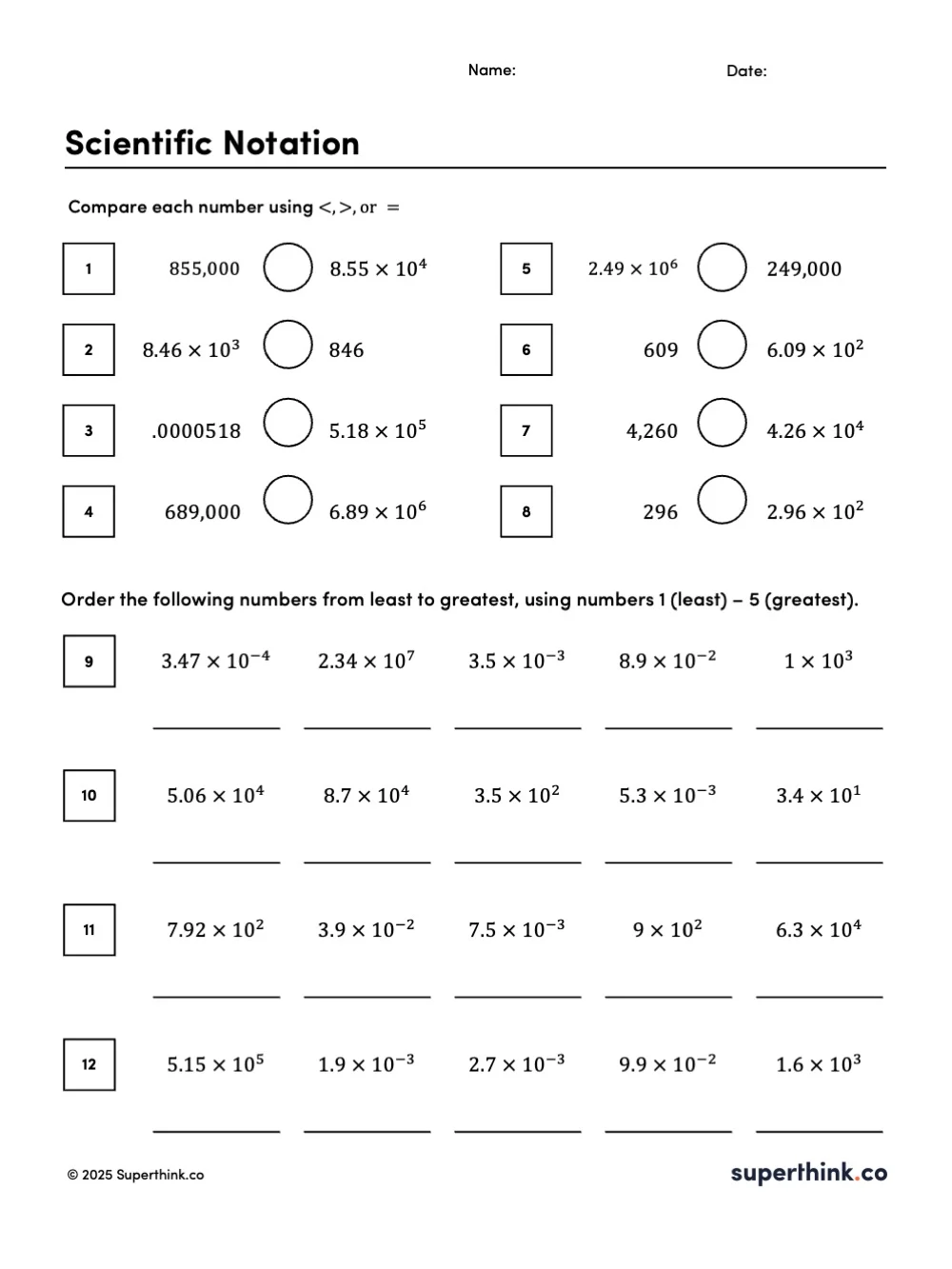Adding and Subtracting Scientific Notation: A Key Step in Middle School Math
Looking for a way to help your students practice adding and subtracting scientific notation? This free worksheet gives students the practice they need with problems that mix both operations.
The worksheet includes problems with matching exponents (the easy ones where students just add or subtract the front numbers) and different exponents (the trickier ones where students have to adjust numbers first). Every answer needs to be written in proper scientific notation, so students get consistent practice with formatting, too.
This PDF worksheet is ready to print, and it comes with an answer key for quick grading or self-checking.
Why This Skill Matters
Picture this: You need to add 650,000,000,000 + 240,000,000,000. Fun, right? Now imagine doing that calculation when the numbers are even bigger—or way smaller, like adding two decimal numbers with 20 zeros after the decimal point.
As students study math in middle school, they start seeing numbers that are too big or too small to write out easily. Whether it’s the distance between planets or the size of a virus, these numbers work best in scientific notation—a smart way to handle huge and tiny numbers using powers of 10.
Scientific notation isn’t just a school thing. Scientists use it all the time. In chemistry class, students might add up the masses of different molecules. In astronomy, they’re adding distances between planets. Engineers calculate data storage by subtracting one huge number from another.
Here’s what this looks like in real life:
- Chemistry: Adding molecule masses like 4.2 × 10⁻²³ grams + 1.1 × 10⁻²³ grams
- Space stuff: Finding total distances like 9.5 × 10¹² km + 2.4 × 10¹² km
- Tech: Calculating available computer storage by subtracting 3.0 × 10⁹ bytes from 6.5 × 10⁹ bytes
Common Student Mistakes to Watch For
Students often stumble on a few key areas when adding and subtracting scientific notation:
Forgetting to match exponents first: When exponents are different (like 4.5 × 10³ + 2.1 × 10⁵), students sometimes try to just add the front numbers and keep both exponents. They need to convert one number first so the exponents match.
Adding or subtracting exponents instead of coefficients: Some students get confused and think they should add the exponents together (like turning 10³ + 10³ into 10⁶). Remind them that when exponents match, they only add the front numbers.
Final answer not in proper scientific notation: Students might get an answer like 12.7 × 10⁴ and forget that the first number needs to be between 1 and 10. They need to convert it to 1.27 × 10⁵.
Additional Scientific Notation Resources
Check out these other scientific notation worksheets on Superthink.co:

